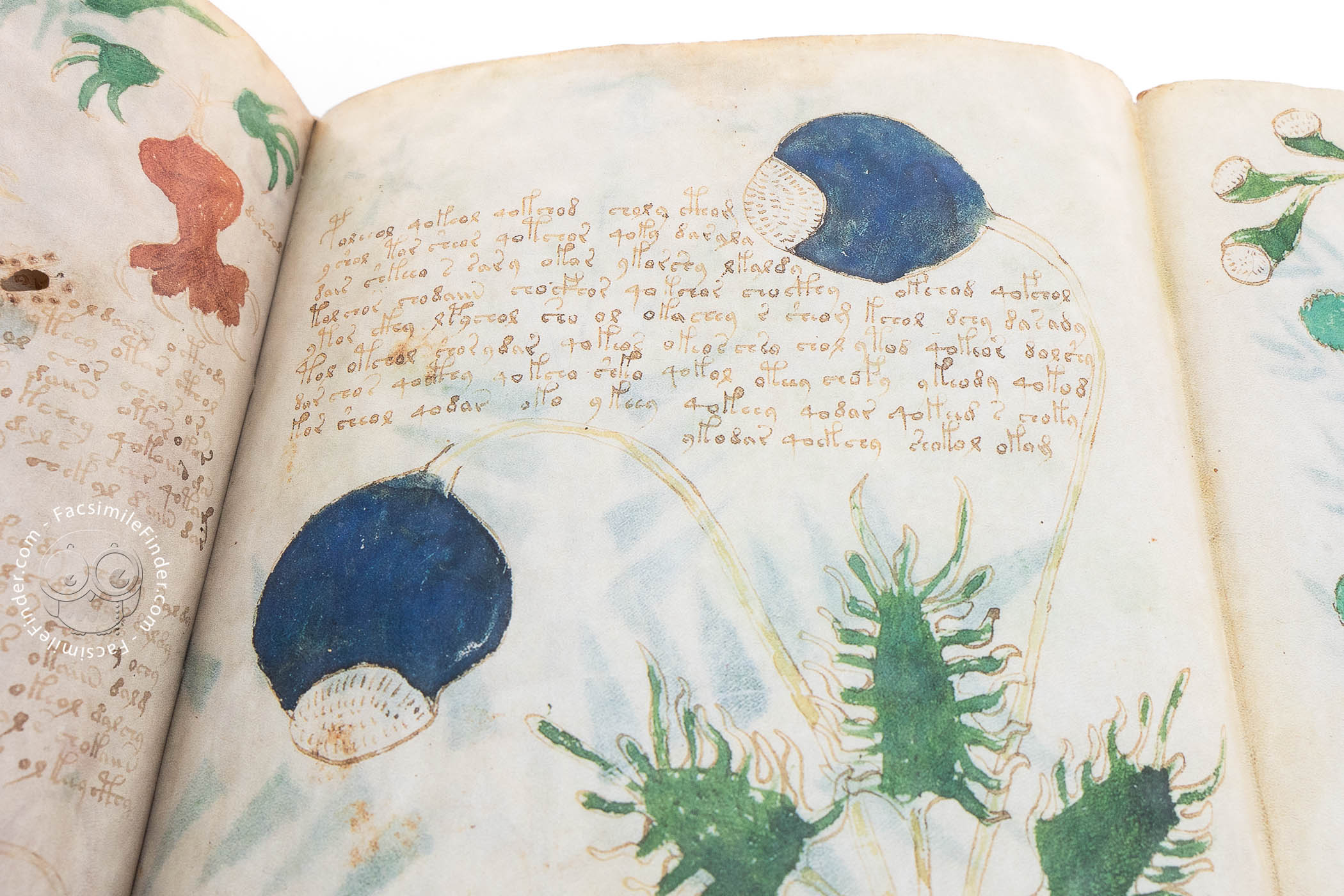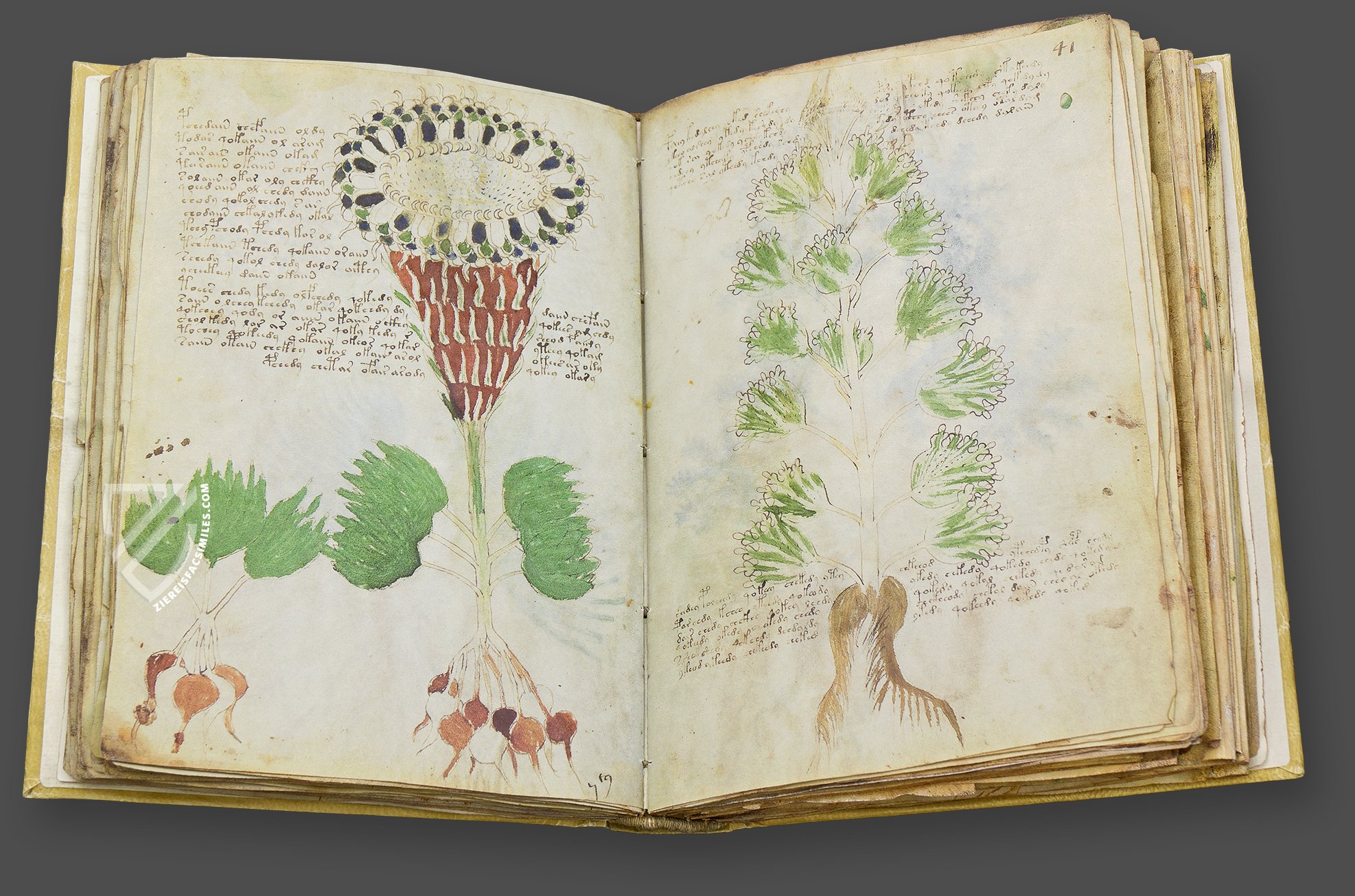
The Voynich Manuscript has been reliably dated to mere decades before the invention of the printing press, so it's likely that its peculiar blend of plagiarism and curation was a dying format. (The women's pseudoscience health website Goop would fit right in during the 15th century.) Even back then, people believed in the pseudoscience of magnets. Gibbs even identified one image-copied, of course, from another manuscript-of women holding donut-shaped magnets in baths. Zodiac maps were included because ancient and medieval doctors believed that certain cures worked better under specific astrological signs. Baths were often prescribed as medicine, and the Romans were particularly fond of the idea that a nice dip could cure all ills. Pictures of plants referred to herbal medicines, and all the images of bathing women marked it out as a gynecological manual. Once he realized that the Voynich Manuscript was a medical textbook, Gibbs explained, it helped him understand the odd images in it. The text would have been very familiar to anyone at the time who was interested in medicine.
#VOYNICH MANUSCRIPT REPRODUCTION CODE#
"The abbreviations correspond to the standard pattern of words used in the Herbarium Apuleius Platonicus – aq = aqua (water), dq = decoque / decoctio (decoction), con = confundo (mix), ris = radacis / radix (root), s aiij = seminis ana iij (3 grains each), etc." So this wasn't a code at all it was just shorthand. "From the herbarium incorporated into the Voynich manuscript, a standard pattern of abbreviations and ligatures emerged from each plant entry," he wrote.
/https://tf-cmsv2-smithsonianmag-media.s3.amazonaws.com/filer/5c/9c/5c9cc5a0-ae28-42dd-81c3-1722967ef1fd/voynich_2.jpg)
His experience with medieval Latin and familiarity with ancient medical guides allowed him to uncover the first clues.Īfter looking at the so-called code for a while, Gibbs realized he was seeing a common form of medieval Latin abbreviations, often used in medical treatises about herbs. Because the manuscript has been entirely digitized by Yale's Beinecke Library, he could see tiny details in each page and pore over them at his leisure. This information, together with the images themselves, invites readers to form their own interpretations of this most famous of enduring mysteries.The elegant design of this Watkins edition is a fitting showcase for the manuscript’s strangely beautiful cryptographic script and otherworldly illustrations, which include astrological, astronomy, herbal medicine and enigmatic drawings of naked women bathing.Further Reading So much for that Voynich manuscript “solution” Gibbs writes in the Times Literary Supplement that he was commissioned by a television network to analyze the Voynich Manuscript three years ago.

Drawing on their extensive knowledge of the period, of other esoteric and alchemical works and of the curious history of the Voynich, they explore its relation to magic and alchemy, and what may be guessed about the meaning of its beautiful illustrations. This complete edition of the Voynich Manuscript includes a fascinating and authoritative foreword and introduction by Dr Stephen Skinner, Dr Rafal Prinke and Dr René Zandbergen, who together detail all that is currently known about this mysterious medieval manuscript, the only book in existence that has been written in this particular language and alphabet – a language that nobody can read. It is truly an occult book - one that no one can read.” - Terence McKenna, ethnobotanist and mystic

“The Voynich Manuscript is the limit text of Western occultism. The three authors offer an enlightening interpretation of this unique text that draws on their deep knowledge of late medieval manuscripts, astrology, alchemy, cryptography and herbal and magical practitioners’ handbooks. Stunning reproduction of the beautifully illustrated and profoundly mysterious Voynich Manuscript.


 0 kommentar(er)
0 kommentar(er)
